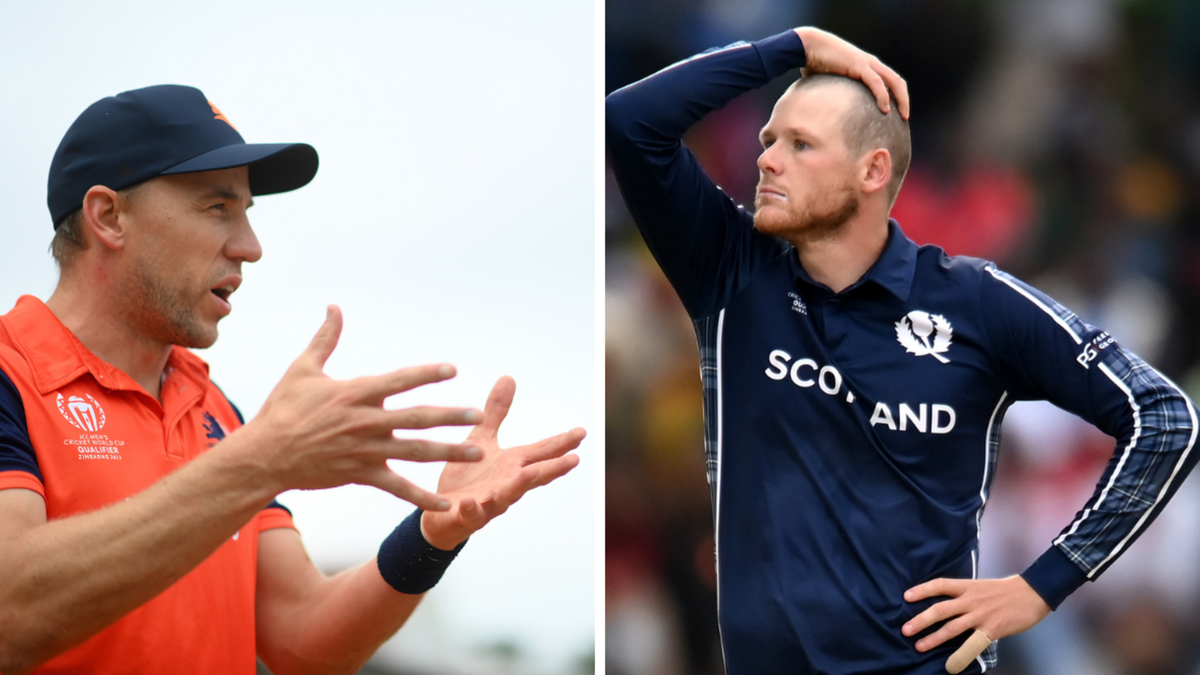
After a fortnight of high-octane, hard-fought action in Zimbabwe, the race to qualify for the Cricket World Cup is down to just two teams: Scotland and Netherlands.
Sri Lanka are the only team to book their place in India so far, while several Full Members have failed to make it. Ireland were the first big team to be knocked out, with West Indies following not long after. Zimbabwe rode the Sean Williams wave to five wins from their first five, but two defeats at the wrong time have seen them crash out. There are echoes of their 2018 heartbreak, when Zimbabwe failed to chase 230 against UAE. This time, hauling in 235 against Scotland would have seen them qualify for the World Cup. Again, they couldn’t quite get over the line.
The difference to 2018 is that Scotland, the team who ended Zimbabwe’s hopes, are now in pole position to qualify for the Cricket World Cup themselves. They have six points in the Super Sixes stage. Victory over the Netherlands would see them reach eight, and confirm their spot at this October’s 10-team event.
If they lose, it gets complicated. One thing we can say for certain is Zimbabwe are out. Even though a Netherlands win would see all three teams tied on six points, there is no scenario in which Zimbabwe’s net run rate*, now set to end at -0.099, surpasses both of Netherlands’ and Scotland’s.
What do Netherlands need? Again, it is complicated. It’s not just the winning margin batting first or second that matters, but the actual total chased or defended, as well as how far clear they finish if batting second. If the game is rain-affected, the picture is even trickier.
Thankfully, the forecast is set fair for Thursday’s do-or-die clash, so let’s assume there’s no overs lost. In that scenario, Netherlands, if they bat first, would need to win by between 25 and 40 runs, with a smaller first-innings total equating to a smaller margin needed. In all likelihood, the required margin will be around 30 runs. An exact set of scenarios is laid out below:
If Netherlands bat second, they will need to win with between 5.3 and 6.2 overs to spare, if they cross the target by one run. The more Scotland score, the fewer overs Netherlands will need to complete their chase in. The wrinkle is if Netherlands, for example, tie the scores and finish with a six, it could give them up to an extra over to play with, since their ‘runs scored’ would have an extra five runs in it. However, in a situation where Netherlands are past the cut-off where chasing the target one run over would not be enough, Scotland could theoretically concede a deliberate wide and see themselves home. Let’s assume, then, that Netherlands pass Scotland’s total by just one run. Here is how many overs they would need to complete each chase in:
The goal is cricket’s biggest, and it’s all to play for. Make sure, when Thursday rolls around, that you have your calculators at the ready!
*A quick reminder: Net run rate is a team’s overall batting run rate minus their bowling run rate. The formula is (runs scored/overs faced) - (runs conceded/overs bowled). Only games against Super Sixes opponents count towards net run rate.








